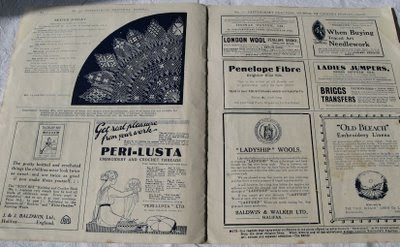A few more images from the books. No, I won't photocopy these for someone, but I thought I'd present the covers and a few 'not quite close enough' inside photographs.
Phildar - this was given to me by a very kind co-student in my lace class. It has crochet stitch diagrams/charts for all the pieces in here. It does not, however, have any knitting charts.
The Harmony Guide books I got at the same time as the Weldons and Needlework booklets. I am collecting these as I like that they're lightweight and the pictures, instructions and charts are easy to understand. I have trouble with knitting charts, though, they just don't make sense like crochet ones do.
The Mon Tricot Knitting Dictionary I scored last year in a charity shop. Originally priced at GBP10/-, I paid a bit more, but it's still very useful. The stitch patterns are pretty clearly illustrated in black and white, except for the colourwork patterns. Also includes crochet, tunisian crochet and... what my fellow Americans call 'FSC' (foundation sc). However, it has a different name in this book.





















